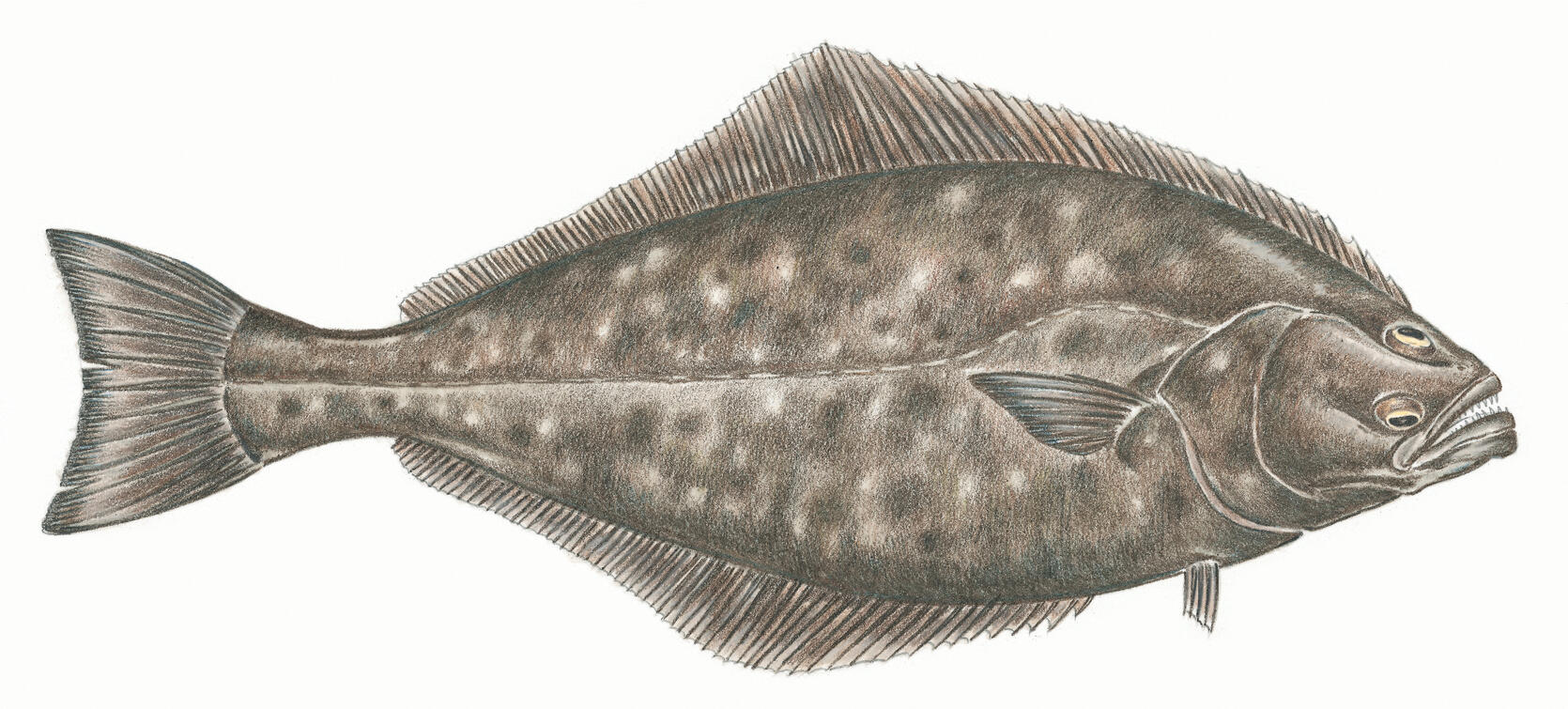- Division of Marine Fisheries

Atlantic halibut (Hippoglossus hippoglossus) is the largest flatfish found in Massachusetts waters and one of the largest fish in the Gulf of Maine. Adults can reach lengths over 7 feet and weigh more than 600 pounds, though individuals this size are rare today. Like other flatfish, Atlantic halibut undergo a transformation early in life, migrating one eye to the opposite side of the head so both eyes end up on the right side of the body. This adaptation allows them to lie flat on the seafloor and remain camouflaged in the sediment.
Halibut have a diamond-shaped body and a broad, tooth-lined mouth built for ambushing prey. Their upper side ranges in color from dark brown to olive, while the underside is pale. They are powerful predators, feeding on fish like haddock, cod, and herring, as well as squid and crustaceans. Halibut typically occupy deeper habitats from the continental shelf to the slope, often in depths of 200 to 1,600 feet. Halibut have large home ranges, some even migrate between US and Canadian waters.
Atlantic halibut are long-lived and slow-growing. Some individuals can live for over 50 years, and may not reach full maturity until ten years old and nearly 50 inches long. This combination of slow growth and delayed reproduction makes the species especially vulnerable to overfishing. Atlantic halibut were once abundant in New England but experienced sharp declines due to intense fishing pressure throughout the 19th and 20th centuries. Atlantic halibut abundance has been rebounding since the early 2000s, though key indicators find halibut biomass remains low compared to historic levels.
Today, Atlantic halibut are managed under strict conservation measures. In Massachusetts, commercial fishers are limited to retaining, possessing, or landing no more than one halibut per vessel per trip or 24-hour period, whichever is longer. Recreational fishers may retain, possess, or land only one halibut per person per day. Retained halibut must be at least 41 inches long.
Though landings are limited, Atlantic halibut remains a prized catch for its firm texture and mild, buttery flavor. It is typically sold fresh in fillets or steaks and featured on menus at high-end restaurants. If you’re lucky enough to find it at a local seafood market, it makes an excellent choice for grilling or roasting.
With continued conservation efforts, scientists, fishers, and fisheries managers hope to continue rebuilding Atlantic halibut populations in the Northwest Atlantic. Until then, this flatfish giant remains a rare and fascinating resident of our deep offshore waters.
By Tara Dolan, PhD, Stock Assessment Specialist
